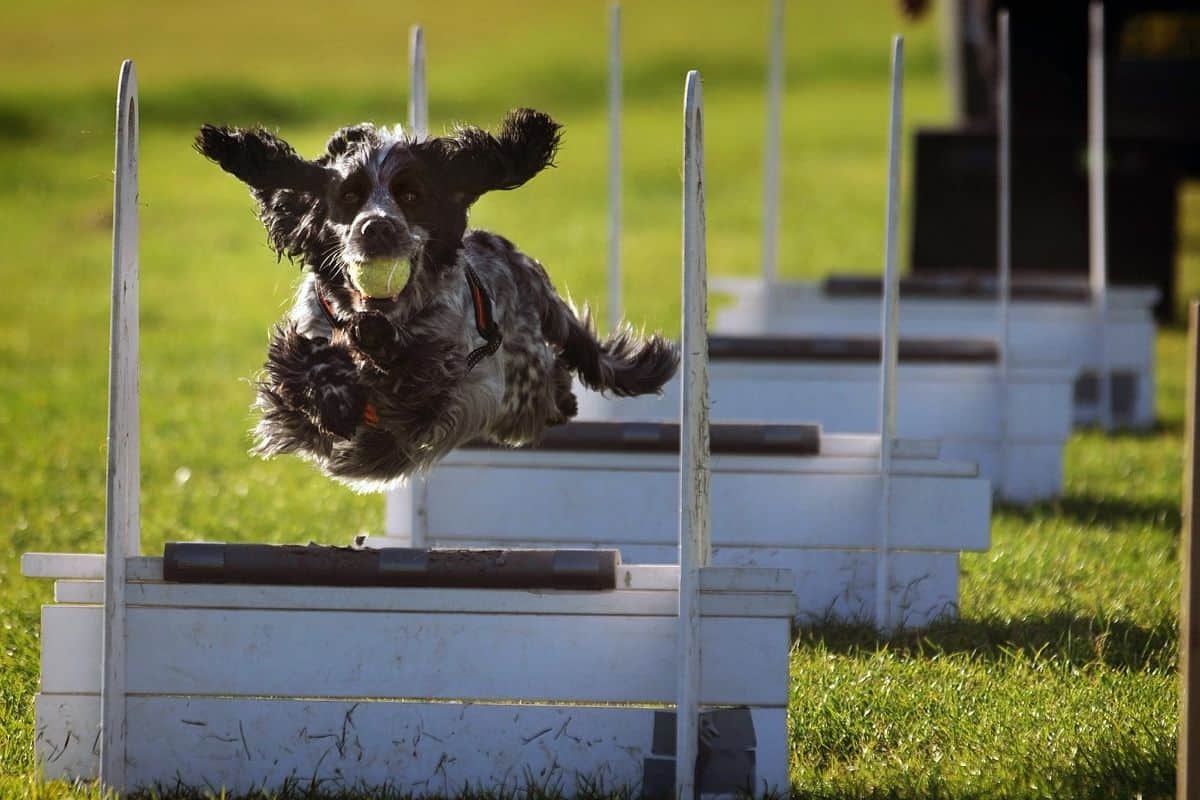Flyball: A Dog Sport Guide

Are you ready to dive headfirst into the exciting world of flyball? It's a sport that's captivating both dogs and their owners alike. Whether you're a seasoned dog enthusiast or just starting your journey with your furry friend, this article will serve as your ultimate guide to everything flyball. From understanding the sport to its benefits, equipment, getting involved, and key organizations, we've got you covered.
What is Flyball?
Flyball is a dynamic, high-energy dog sport that will leave your pup's tail wagging and your heart pounding. It's all about speed, precision, and teamwork. Imagine a relay race for dogs where they soar over hurdles, trigger a spring-loaded box to release a tennis ball, and then dash back to their handler with the ball in their mouth. It's a canine adrenaline rush that's sure to get both you and your dog's tails wagging.
Flyball courses consist of a line of four hurdles leading to the box, where the dog needs to trigger the spring-loaded mechanism, releasing a tennis ball. After retrieving the ball, the dog races back over the hurdles to the starting line, and the next dog in the team takes its turn. The team that finishes the race with all dogs completing the course correctly wins.
Benefits of Flyball
The excitement of flyball isn't the only thing that will leave you and your dog addicted to this sport. There are numerous benefits that make it an excellent choice for dogs and their owners:
- Physical Fitness: Flyball is an excellent way to keep your dog in shape. The sprinting, jumping, and quick turns provide an intense workout for your furry friend, promoting cardiovascular health and muscle tone.
- Mental Stimulation: The sport challenges your dog's problem-solving abilities and sharpens their focus as they navigate the course. It's an excellent way to engage your dog's mind, which can be particularly beneficial for high-energy breeds.
- Bonding: Flyball enhances the bond between you and your dog. As a team sport, it requires effective communication and trust between handler and canine athlete. The shared experience of training and competing can strengthen your relationship.
- Socialization: Participating in flyball competitions introduces your dog to other dogs and handlers, promoting socialization. It's a great way to make new friends, both four-legged and two-legged.
- Stress Reduction: The excitement and endorphin release that come with flyball can reduce stress and anxiety in both dogs and their owners. It's a fantastic way to blow off steam and enjoy quality time together.
Equipment Needed for Flyball
To get started with flyball, you'll need some essential equipment. While the sport doesn't require extensive gear, it's crucial to have the right tools for training and competition:
- Hurdles: Flyball hurdles are approximately 8 inches high. Teams typically have four hurdles in a row, and dogs must clear them while racing the course.
- Flyball Box: The box is the heart of the flyball course. It contains the tennis balls that dogs must retrieve. The box should be equipped with a spring-loaded mechanism that releases the ball when the dog triggers it.
- Tennis Balls: You'll need plenty of tennis balls, as they are used for training and during competitions. Make sure they are durable and can withstand a lot of chewing and bouncing.
- Leash and Collar: A sturdy leash and collar are essential for controlling your dog during training and between runs in competition.
- Treats and Rewards: Positive reinforcement is key to training. Have a selection of your dog's favorite treats ready to reward their good behavior and performance.
- Training Tunnel: While not essential, a training tunnel can help your dog get used to the sensation of running through tunnels, which is a common feature in flyball courses.
- Water and Bowls: Staying hydrated is crucial during training and competitions, so bring water and bowls for your dog.
How to Get Involved in Flyball
Getting started with flyball is an exciting adventure. Follow these steps to immerse yourself in the world of flyball:
- Find a Local Club or Trainer: Begin your journey by searching for a local flyball club or trainer. They'll help you and your dog learn the ropes, from basic cues to advanced techniques.
- Basic Obedience Training: Before diving into flyball, ensure your dog has a solid foundation in basic obedience. Cues like "sit," "stay," and "come" are essential for effective communication.
- Attend Training Classes: Enroll in flyball training classes to build your dog's skills and your own knowledge. It's a great way to meet fellow enthusiasts and learn the sport's finer points.
- Practice: Consistent practice is the key to success in flyball. Train regularly to improve your dog's agility, speed, and accuracy. Set up a mini-course at home to reinforce the skills learned in training classes.
- Find a Team: To participate in competitions, you'll need to join or form a team. Flyball is a team sport, with each team consisting of four dogs and their handlers. Teamwork and coordination are vital.
- Participate in Competitions: Once you and your dog are ready, compete in flyball tournaments. Look for local, regional, or national competitions hosted by reputable organizations like NAFA (North American Flyball Association). The camaraderie and the thrill of competition are bound to keep you coming back for more.
Key Flyball Organizations Hosting Competitions
Flyball competitions are typically organized by dog sports organizations. Here are a few key organizations that host flyball events:
- North American Flyball Association (NAFA): NAFA is the primary organization responsible for organizing and overseeing flyball competitions in the United States, including regional and national events.
- United Flyball League International (U-FLI): U-FLI is another notable organization that hosts flyball events and competitions, with a focus on promoting fun and inclusive competition.
Frequently Asked Questions
Flyball is suitable for a wide range of dog breeds, from small to large. Border Collies, Whippets, Australian Shepherds, and Staffordshire Bull Terriers are often top contenders due to their speed and agility, but any breed that loves to run and fetch can enjoy flyball.
Flyball typically offers different divisions, such as Regular, Multibreed, and Veterans. Dogs compete based on their skill level and experience.
Flyball can be adapted to accommodate dogs of various ages and sizes. It's important to assess your dog's individual fitness and consult with a vet if you have concerns about their participation.
Basic flyball training can be done at home with hurdles, a flyball box, and plenty of patience. However, joining a club or attending formal training classes is recommended for effective skill development.
No prior experience is necessary. Flyball training is designed to accommodate beginners and experienced handlers alike.
The cost can vary depending on your location and the level of involvement. Training classes, equipment, and competition fees are the primary expenses.
There are typically no age restrictions for handlers, but some competitions may have age categories for dogs, such as Veteran divisions for older dogs. Check with the organizing body for specific rules.
Flyball is a thrilling sport that brings joy and excitement to both dogs and their human companions. It offers a myriad of physical and mental benefits for your four-legged friend, and it's a fantastic way to bond and socialize. So, if you're looking to become a dog trainer, look no further than the world of flyball. Start your training, join a team, and experience the rush of this dynamic sport firsthand. And remember, if you're in the St. Louis area, The Academy of Pet Careers has career programs for anyone looking to become a dog sport trainer.
 Author - Joseph Schifano
Author - Joseph Schifano
Joseph Schifano is the owner and President of The Academy of Pet Careers. With over 20 years of experience working in the pet field, managing large scale pet care businesses, he has experience in every facet of the industry. Joseph's focus is primarily on the business of pet care but his passion is in understanding animal behavior how a dog's brain works so we can improve the care we provide as pet professionals. He is a huge advocate for Pet Empowerment and Force Free training methods. Read more in Joseph's full bio.
